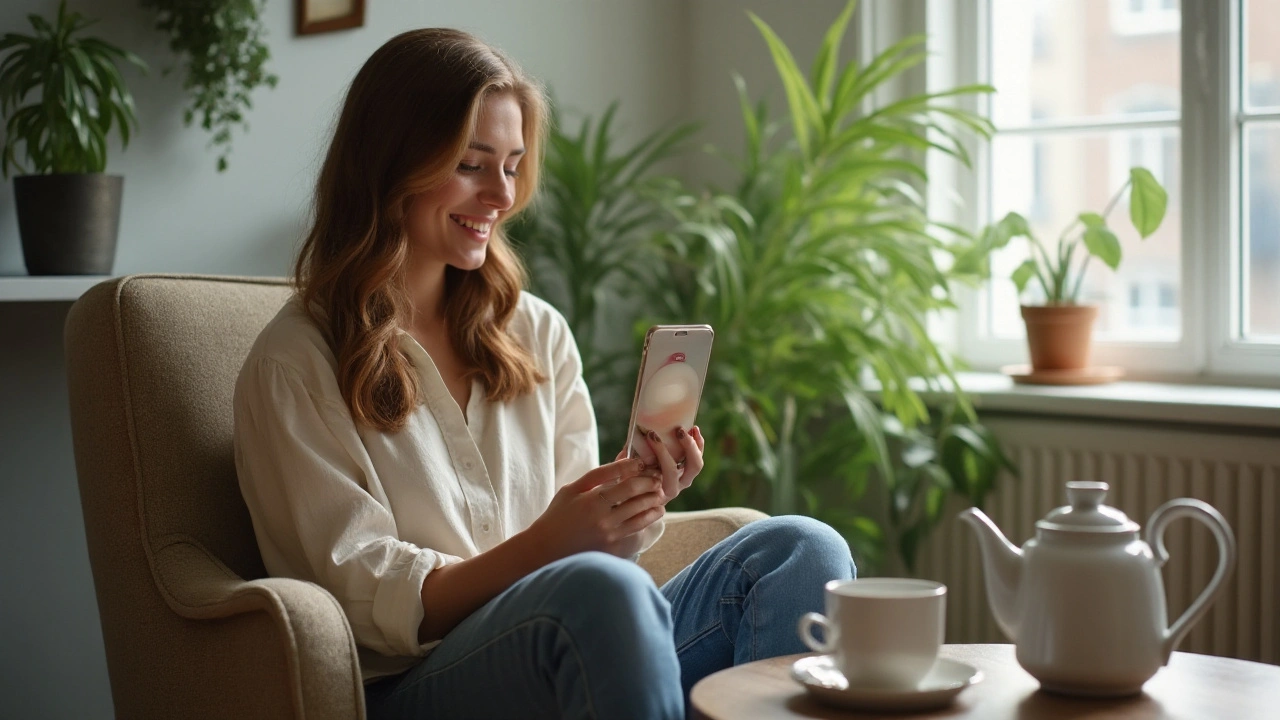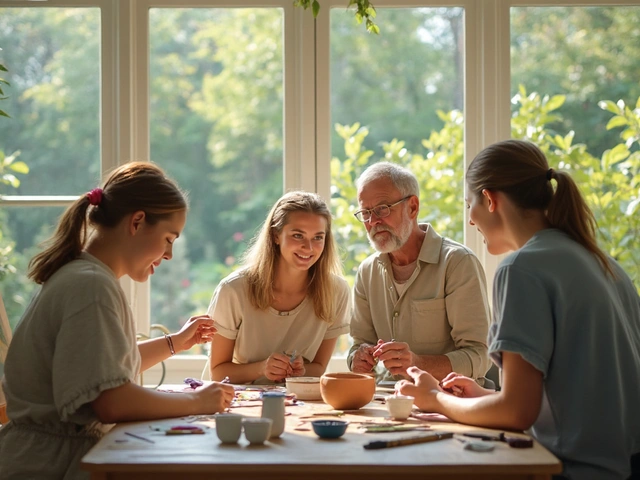The realm of mental health is a landscape that has seen dramatic shifts in recent years, much of it propelled by the rapid advance of technology. At first glance, smartphones and high-speed internet seem far removed from the personal and often sacred journey of mental well-being. Yet, they are interwoven in ways that are both surprising and transformative.
As we glance at the app store, we find it brimming with applications promising to help manage our emotions, meditation guides, and even virtual therapists ready to lend a digital ear. Social media, too, plays a unique role; a double-edged sword that both connects and isolates. The influence of these platforms is profound, making it all the more important to unpack how they affect our mental health.
There is a growing use of virtual reality to create spaces for immersive therapy sessions, offering a new dimension to treatment. However, with these advancements come challenges such as digital overload and the need for balance. As we navigate through these digital waters, it becomes vital to understand the nuanced relationship between technology and mental health.
- The Rise of Mental Health Apps
- Social Media's Influence on Mental Well-being
- Virtual Reality for Therapy
- Challenges of Digital Overload
- Balancing Technology and Mental Health
The Rise of Mental Health Apps
The digital age has ushered in an era where help is quite literally at our fingertips. Among the many areas impacted by technology, mental health has seen a particularly noteworthy transformation. The emergence of mental health apps marks an evolution in how we approach self-care and treatment. These apps are designed to enhance mental well-being by offering tools and resources that are accessible at any time. As anxiety and depression levels rise, especially among younger generations, the need for accessible mental health tools has never been more pressing.
From cognitive behavioral therapy guides to mindfulness exercises, these apps cater to a wide range of mental health needs. Notable applications like Headspace and Calm have become household names, expanding their reach by offering guided meditation and techniques to reduce stress. Talkspace and BetterHelp, on the other hand, take a different approach by connecting users with licensed therapists, providing a virtual space for therapy sessions. This shift to digital platforms has opened doors for many who might find traditional therapy inaccessible or intimidating.
The effectiveness of these apps is a hot topic among experts. A study published in JMIR mHealth and uHealth journal found evidence suggesting that apps could significantly reduce symptoms of depression and anxiety. Users report feeling a sense of empowerment, having the resources to manage their mental health independently. However, it's crucial to remember that while these tools can provide vital support, they are not substitutes for professional advice or treatment when needed.
"Mental health apps are an incredible step forward in democratizing access to fundamental care," says Dr. Sarah Jones, a clinical psychologist at the University of Cambridge. "They serve as a bridge, offering immediate support while individuals pursue more structured treatment if needed."
Despite their advances, these apps are not without challenges. Privacy remains a significant concern, with users entrusting sensitive personal information to these platforms. Ensuring data protection is paramount, requiring ongoing dialogue and transparency from developers. Additionally, there's the issue of content quality. Not all mental health apps offer verified information, which can potentially mislead users. Those new to mental health care may struggle to discern which apps are credible, underscoring the importance of consumer education.
As we look towards the future, the intersection of technology and mental health promises exciting potential. Developers are now exploring how artificial intelligence could tailor mental health interventions even further. The integration of wearable technology is also on the horizon, potentially offering real-time data to enhance personalization. Yet, in this rush toward digital solutions, the goal should remain steadfast: to enhance well-being and provide more people with pathways toward healthier minds.
Social Media's Influence on Mental Well-being
Social media, with its sprawling networks and constant flow of information, significantly shapes our mental health landscape today. The convenience and connectivity it offers are unprecedented, allowing us to stay in touch with family, friends, and trends with a swipe of our fingers. Yet, this constant connectivity is a double-edged sword. While it can be comforting to know we are never truly alone in the virtual world, the same realm can sometimes feel overwhelmingly isolating. This dynamic plays a crucial role in influencing our mental states, often in subtle, impactful ways. The curated lives we follow can spark a sense of inadequacy, leading to anxiety or even depression. The comparisons we make with others can erode our self-esteem, as our everyday realities rarely match the polished perfection of social media feeds.
An interesting perspective arises when we consider the way social media generates a sense of community. Platforms like Facebook and Instagram foster connection, offering spaces to engage with like-minded individuals and express ourselves. Communities are not limited by geography, allowing for shared experiences across global distances. Yet, these same platforms are fertile ground for cyberbullying, harassment, and the perpetuation of toxic behaviors. According to a study published by the American Journal of Preventive Medicine, excessive use of social media is linked with feelings of isolation. It's vital for us to grasp that while social media can bridge gaps between people, it may also widen the gap in our feelings of loneliness.
Another critical aspect is how social media demands our attention. This incessant pull towards our screens can lead to what some experts call 'digital addiction'. With constant notifications and updates, there's a relentless demand on our mental processing power, leaving us little room to disconnect and unwind. Moreover, the addictive algorithms behind these platforms are designed to keep us scrolling, often leading to disrupted sleep patterns and increased stress levels. This ever-present digital world impacts our mental health in profound ways, necessitating a balance that is still elusive to many.
As discussions around social media toxicity rise, some platforms are beginning to address these mental health concerns. Initiatives like visible 'screen time' alerts and 'digital detox' prompts are steps towards promoting healthier use, but they barely scratch the surface of a widespread issue. On the brighter side, many users find solace in creative expression and support groups found online. Social media can thus function as a double-edged sword, and understanding its complexities is crucial for managing its impact on our well-being.
"Social media is a double-edged sword. It can be a place where people find connection and joy, but it can also be a breeding ground for envy and disempowerment," says Dr. Ramani Durvasula, a clinical psychologist and media expert.
There's no denying that social media has entrenched itself deeply in our modern existence. As society continues to grapple with its influence on mental health, individuals need to navigate this landscape thoughtfully. Recognizing and understanding the dichotomy of social media’s influence allows us to harness its benefits while protecting our well-being.

Virtual Reality for Therapy
Virtual Reality (VR) is no longer confined to the realms of science fiction or gaming. It's making significant inroads in the field of mental health therapy, proving to be a game-changer for treatments aimed at improving mental well-being. The immersive nature of VR allows individuals to step into environments tailored to support therapeutic outcomes. This means that those receiving treatment can experience spaces designed to relax the mind, or even simulate real-world scenarios to practice and hone coping mechanisms. Such controlled environments help users manage anxiety, phobias, and PTSD, offering a sense of presence that traditional methods sometimes fail to provide.
One of the key benefits of VR in therapy is its ability to expose patients to situations they fear or avoid in a safe, controlled manner. Known as exposure therapy, this technique has long been used to treat various anxiety disorders. With VR, patients can repeatedly face their fears — whether it’s speaking before a crowd or peering over the edge of a virtual skyscraper — without leaving the therapist’s office. These virtual scenarios are customizable and can be tailored to the individual's specific needs, providing a personalized therapy session that can enhance engagement and effectiveness.
Researchers at the University of Oxford have explored the use of VR for treating severe paranoia. Their studies have shown that patients engaged with virtual environments representing everyday social situations, which, over time, reduced their paranoid thoughts. This method allowed patients to gain confidence in dealing with real-life scenarios. Emphasizing the potential of VR, Dr. Daniel Freeman, a Clinical Psychologist involved in this research, pointed out, "Virtual reality treatments are the starting point of what could be a much larger movement towards personalized therapy."
Beyond phobias and paranoia, VR is also used for mindful meditation practices and to stimulate cognitive functions in older adults, providing stimulating environments that are hard to create otherwise. For example, seniors can walk through a forest, listen to the calming sounds of nature, or engage in cognitively challenging tasks that keep their minds sharp. VR therapy isn't just all about serious disorders; it also plays a role in promoting general well-being.
However, as promising as it may be, VR therapy does not come without its challenges. Accessibility remains a hurdle for some, as the equipment and software can be costly. Despite these barriers, many tech manufacturers and health professionals are optimistic. They believe continued advancements and increased adoption will eventually drive costs down, making these therapeutic experiences accessible to more people.
Interestingly, recent statistics suggest a growing acceptance of technology in therapy, with nearly 40% of therapists considering VR a valuable addition to traditional treatment methods. The sentiment highlights a shift towards embracing technology as a critical component in the mental health landscape. As this field continues to evolve, it invites a new wave of possibilities for patients and practitioners alike, illustrating a path where digital innovation and healing intersect.
Challenges of Digital Overload
Navigating the ever-accelerating wave of technology, many find themselves amid a sea of digital platforms, overflowing with content and notifications vying for our attention. The allure of constant connectivity can lead us astray, overloading our senses and impacting our mental health in ways we may not fully understand. It’s been observed that continuous engagement with digital devices can contribute to stress, anxiety, and even depression. The paradox here is that the same technology designed to simplify our lives can often make them more complicated, adding undue pressure and expectations.
A recent study highlighted that individuals spending more than two hours a day on social media could be at a higher risk of experiencing mental health issues, such as anxiety and depression. The sheer volume of information, not to mention the often unconsciously competitive nature of social media interactions, can lead to feelings of inadequacy. It's like running on a treadmill that never stops; always an update, always a notification. The issue is not just the quantity but the quality of information we consume, with misinformation and negativity contributing to increasing stress levels.
"The digital age, while offering immense opportunities, requires moderation and mindfulness to prevent its tools from overwhelming us. " - A notable psychologist.
This constant stream can also impact sleep, with surveys suggesting that screen use before bedtime is a significant factor in insomnia. Many have reported blue light emission from screens disrupting our natural circadian rhythms, which can lead to a poor night's rest. The human brain has ancient wiring not entirely adapted to this digital bombardment, and without conscious effort, it's easy to fall into a cycle that's hard to break.
Strategies to Manage Digital Overload
So, how can one manage this digital overload? It starts with the conscious awareness of how much time is being spent online. Here are a few strategies that might help in creating a more balanced digital life:
- Implement tech-free times or zones, such as no phones in the bedroom or digital detox days.
- Use apps that limit screen time or block distracting websites during certain periods.
- Engage in physical activities or hobbies that don't involve screens to create a healthy balance.
- Be mindful of the content consumed and its impact on mood and energy levels.
- Seek professional help if feelings of overwhelm and anxiety become persistent.
By incorporating these practices, we can turn the tide on digital overwhelm, using technology to support rather than undermine our mental well-being. This balance can ensure that we make the most of the digital age, harnessing its potential to empower rather than encumber our lives.

Balancing Technology and Mental Health
In a world where technology is ever-present, finding a balance between our digital lives and our mental health has become a modern necessity. The benefits of technology in facilitating connectivity, learning, and entertainment are undeniable. However, the constant barrage of notifications, the pressure to keep up with everything online, and the sometimes distorted realities presented by social media can take a toll on our well-being. Striking a balance involves understanding how to use technology in ways that support, rather than undermine, our mental health.
One of the first steps to achieving this balance is becoming aware of how technology affects us individually. It's essential to recognize when digital interactions are contributing to stress or social comparisons that are skewing perceptions of reality. Several studies suggest that this state of heightened connectivity can sometimes lead to anxiety and feelings of inadequacy. A simple way to assess this is by noting how you feel before and after using devices, tracking any mood changes, and modifying usage accordingly.
Another important consideration is setting boundaries with technology. Designating tech-free zones or times, such as during meals with family or before bedtime, can promote real-world interactions and improve sleep quality. Engaging more in offline activities like reading, exercising, or spending time in nature can significantly alleviate stress and foster creativity. Indeed, a balanced approach often involves creating a blend of digital and analog experiences.
"Technology is a useful servant but a dangerous master." - Christian Lous Lange
For those integrating digital tools into their mental wellness regimen, it’s crucial to choose quality content purposefully. There are numerous apps designed to enhance relaxation, mindfulness, and mental health, yet not all are created equally. Seeking recommendations from mental health professionals or opting for evidence-based technologies can guide more effective choices. Maintaining this selectivity ensures that what enters your digital space supports your well-being.
Statistics reveal that on average, individuals spend over three hours daily on their smartphones, which underscores the importance of mindful usage. Implementing settings that limit screen time or track app usage helps in self-regulating consumption. Eventually, balancing tech and mental health is about reshaping habits and attitudes toward technology, refining how we engage with it so it serves our well-being rather than controlling it. With these strategies, it's possible to embrace the positive aspects of technology without allowing it to overwhelm daily life.






